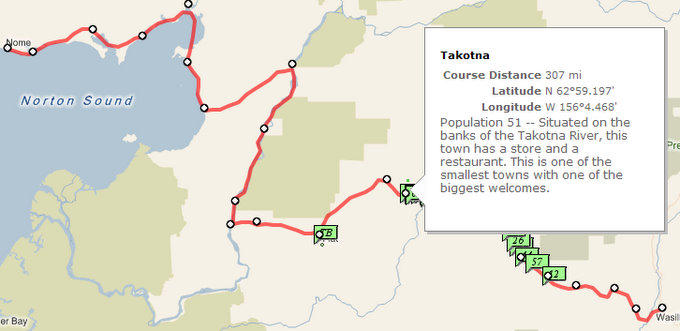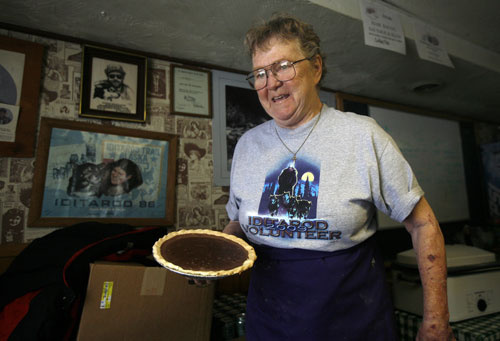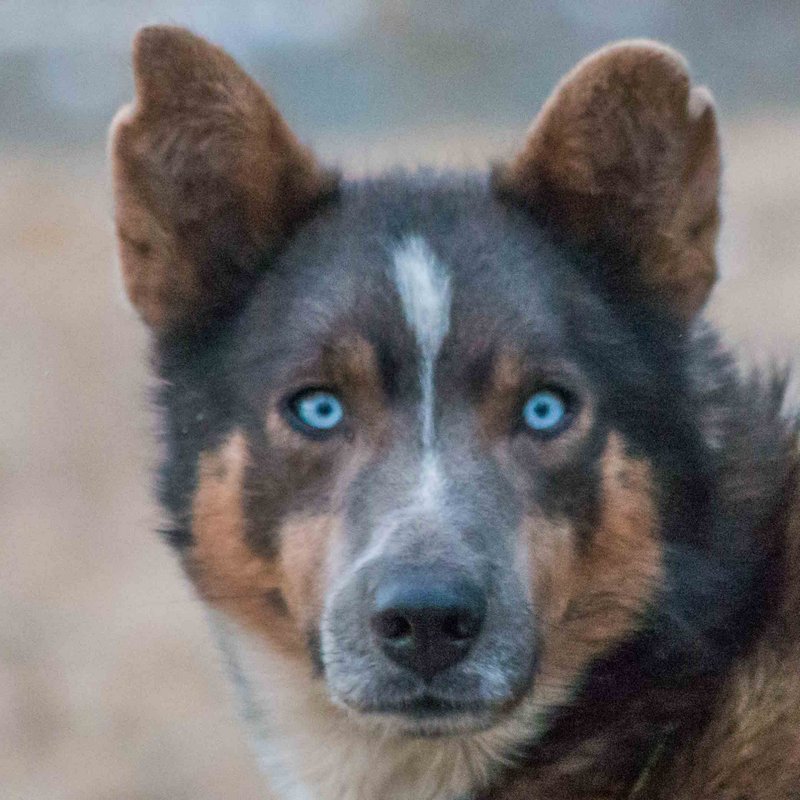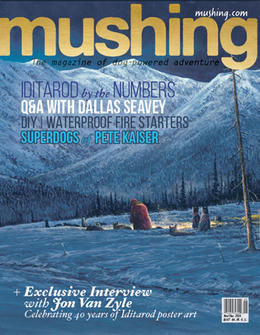Thank You Sponsors!
Find it at Kaiserracing.com
-
Recently Posted
- Iditarod 2025 – Sitting This One Out!
- On the Runners – Bogus Creek 150
- 25 Bogus Creek 150 Underway!
- 2025 K300 Banquet Photos
- 2025 K300 – Pete’s Award Acceptance
- 25 K300 Finish Photos
- 25 K300 Finish 360VR
- 25 K300 Finish Line Video
- 25 K300 – Morning After Results
- Pete and the Team Win 9th Kuskokwim 300!!
-
Searching for Something??
Watch Pete’s Suicide Prevention PSA!
The Daily Bark – Social Networking
Contact Information
Peter Kaiser
Box 88
Bethel, AK 99559
Meet Team Kaiser
Mushing Magazine
Kaiser Racing Media
Hear about Kaiser Racing Media on KYUK!Your Donation Makes this Possible! Thank-You!
Send Us Photos!
Have Team Kaiser Photos? Send them to kaiserdogteams@gmail.comWebsite Woes??
If you have any problems with the website, let us know!!!
Author Archives: Lead Dog
Day 3- Let the Sleeping Begin!
Pete arrived into Takotna last night at 02:28am with 15 dogs. He is taking his 24 hour layover here in the land of great pies and steak dinners. He can leave at 02:28am early tomorrow morning. He arrived in 20th place.
From Alaska Dispatch TAKOTNA — After driving dogs for two days, the village of Takotna is where Iditarod mushers can count on a bit of luxury. Here, volunteers offer valet parking for the dog teams, and hot water — used to help feed the dogs — is always available. Race fans make sure of that by constantly tending to fires burning beneath the water barrels. With the added bonus of hot showers, good places to sleep, and famously abundant homemade pies and home cooking, Takotna is the place where mushers love to linger and is where many will take their mandatory 24-hour layovers.
Overnight Tuesday mushers piled into the riverside community, led by a four-time champ and record holder for the fastest time ever, Martin Buser, who pulled in at 8:16 p.m. with a feisty team and some spunk of his own. Gliding in with his head lamp turned off, Buser nearly caught the checkers off guard.
“He knows that’s what we watch for,” said lead checker Frankie Sayer, who suspects Buser did it as a way to joke with the race staff. After then shouting at an onlooker to get out of his way, Buser barked out another request to the dog handlers standing by to lead his team to its sleeping spot: “Let me go tie up those leaders before we have multiple breedings.”
One of Buser’s female dogs is in heat, and some of the males on the team were having a hard time resisting her.
Buser had the place to himself for a while before any other mushers showed up. But within two hours the bulk of last year’s top ten finishers were on site, including the race’s man to beat, another four-time champ and reigning king, Lance Mackey. Mackey pulled in under starry skies just before 10 p.m. with a pack of other racers close behind.
One by one each declared they planned to take their 24-hour rest, and many seemed to be having better luck with their dogs than in prior legs of the race. Where sick or injured dogs had earlier caused teams to dwindle in size, the 18-mile section of trail from McGrath to Takotna, with gentler terrain and the cooler temperatures of a night-time run, interrupted the trend.
For all of the creature comforts that a layover in Takotna provides, there is another reason mushers will haul up here instead of pressing on for Ophir. Taking off after a long rest from Takotna allows drivers to monitor how well each dog is doing and affords them the opportunity to make adjustments to the team, if necessary. If a dog isn’t performing well, a musher can drop it after the short run to the next checkpoint. But if a musher takes off from Ophir fresh from a day-long rest, it will be 90 miles before he or she can make the drop.
Contact Jill Burke at jill(at)alaskadispatch.com.
Pete into McGrath
The top 10 mushers had times from McGrath of between 2:20 and 2:38. Not only does this tell us the competition is extremely stiff, it also tells us that the trail is very good. Weather conditions tomorrow in McGrath are relatively mild. This will be good for the Team to rest and relax before the push to Unalakleet. You couldn’t ask for better conditions– Knock on wood, no storms in sight.

To put it all in perspective:

Mike Jr. into Takotna – Pete 5 miles out of McGrath
Mike Williams Jr. is showing into Takotna (11:30pm) while Pete is just around the bend from McGrath. I fully expect Pete to push on through the night to the waiting hospitality in Takotna. (And the lack of Press, People, and Noise) Time to settle in for a short winter nap!!
The Pies are waiting!! Most of the front runners are taking their 24’s in Takotna, “the Spa of the Iditarod Trail.” Steak dinners for the mushers and a lunch bag for every musher on the way out. Now that’s Bush hospitality!!

Zuma’s Paw Prints– The trail used by Iditarod that runs from McGrath to Takotna (tuh-KOTT-nuh) is a well traveled snowmachine route. The 18 mile distance can be covered in two to three hours. At night or on cold days, the route is generally fast but on warm days, the path can be slow. Most of the distance runs either on or along the the Kuskokwim and Takotna Rivers.
Takotna, as a checkpoint, is known for its hospitality and has been called the “friendliest little checkpoint on the Iditarod Trail.” The checkpoint is located in the community center. which overlooks the Takotna River. The food is plentiful and delicious. Every musher is treated to moose steak, fresh fruit, lettuce salad and for dessert there is an abundant choice of pies and cakes. Its no wonder that mushers like to take their 24 hour rest here – delicious food and friendly folks. Takotna is a lot quieter than other checkpoints as there isn’t lodging for reporters so they tend to congregate at McGrath and move further up the trail. Now with the Iditarod Air Force – that’s a different story. If a plane happens to be heading back to McGrath for fuel or lodging, the pilot often sets down on the frozen river in front of the checkpoint and enjoys some of the famous Takotna food, especially the pie.
The village has 55 residents. It’s a big deal when Iditarod comes through – everyone needs to help. Folks from the lower 48 who have relatives in Takotna head to the little village to share in the work load. The school children are on vacation so they can help. The checkpoint is manned day and night by residents, friends and relatives in 12 hour shifts. Handler worked with school children who were on the 7:00 a.m. to 7:00 p.m. cleanup crew. When a musher left, the children would rake up the left over straw, food and poop then bag it. Another crew would work from 7:00 p.m. to 7:00 a.m. Takotna is an amazing place and Iditarod is truly a labor of love.
Takotna is known for its cold winters and cool summers. On Average, temperatures range from -42°F to zero degrees in the winter and between 42 and 80°F in the summer. Precipitation would be very similar to McGrath with 10 inches of rainfall including around 7 feet of snow. The river is frozen from November through May. The community has electricity. The school and community center have running water and flush toilets. Water is hauled from the waterworks for home use and honey buckets and outhouses are used for sewage disposal. Travelers come and go from the village by either plane or boat. The local road system covers about 15 miles including a road that climbs to the airstrip located high above the village. Handler made the 1.5 mile trek up to the airstrip and was treated to a distant but breath taking view of Denali.
The population of the community is a mixed group of non-Natives, Ingalik Athabascans and Eskimos. Some residents have jobs with the school district, post office, health clinic or local businesses like the small grocery store or seasonal construction companies. A great majority of the area residents rely on moose, salmon, gardens and wild berry crops as food sources. Take a close look at this picture of the inside of the checkpoint. What items do you see that also appear on your table at home? Think about this – this tiny village is in the interior bush of Alaska – accessible only by plane or boat – they hunt and fish for most of their meat – yet we have many things in common.
Now for a little history that Handler and I learned from the Alaska Community Data Base. Over the years, Takotna has been known as Berry Landing, Portage City, Takotna City, Takotna Station and Tocotna. In 1908 after gold was discovered in the Innoko District, Arthur Berry was hired to bring supplies up the river. The village was founded at the spot where the river became too shallow for Berry’s sternwheeler to continue. The village prospered during the gold rush having several commercial companies and roadhouses as well as a post office, radio station and news paper. The water level changed from year to year and so it was not always possible to get supplies to Takotna thus a landing was established further down river. Later in the 1930’s mining activity declined, the Alaska Commercial Company closed the store and McGrath became the supply hub for the area.
McGrath in Sight!!
Buser Burns up the Trail!
Martin Buser is just into Takotna at 8:30pm or so. He is flat moving!
The field of teams is stretched out from Nikolai to Takotna now. What a perfect night for mushing! (At least from here!!) Let’s hope the iPod is charged up and Pete has a nice run!

Photos from Nikolai
Pete taking a breather..

Dressed Warm- Williams Style!!

On the Trail to McGrath
GPS Tracker has Pete out of Nikolai. He is 6 mile out, so I figure he left around 7pm. He should be in McGrath between 12 and 1 this evening. Stay tuned!
























